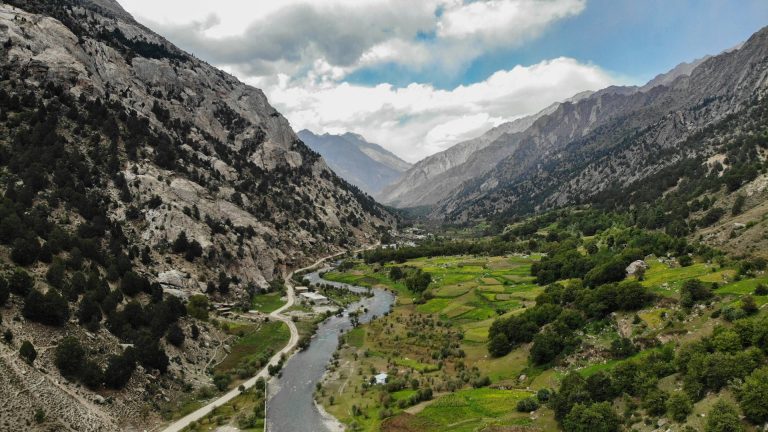Afghanistan is a landlocked country located in South Asia, sharing borders with Pakistan, Iran, Turkmenistan, Uzbekistan, Tajikistan, and China. It boasts diverse landscapes ranging from the rugged peaks of the Hindu Kush mountains to vast deserts and fertile valleys. The climate varies significantly across regions, with cold winters in the mountains and hot summers in the lowlands.
The population of Afghanistan is approximately 38 million, consisting of various ethnic groups such as Pashtuns, Tajiks, Hazaras, and Uzbeks. The official languages are Dari and Pashto, reflecting the country’s rich cultural tapestry. Major cities include Kabul, the vibrant capital, Herat with its Persian influences, and Kandahar, known for its historical significance.
When planning a visit, it’s important to stay informed about visa requirements and safety guidelines. Afghanistan offers a unique travel experience, but travelers should be aware of the current security situation and take recommended precautions.
General Information

Culture
Afghanistan is renowned for its rich cultural heritage and deep-rooted traditions. Afghan hospitality is legendary, with guests often welcomed with a cup of green tea and a warm meal. Traditional Afghan clothing, characterized by colorful fabrics and intricate designs, reflects the country’s diverse cultural influences.Afghan cuisine is a delightful fusion of flavors, with dishes like succulent kebabs, fragrant pilaf, and savory mantu (dumplings) taking center stage. Fresh bread (naan) is a staple at every meal, and traditional drinks like doogh (a yogurt-based beverage) are commonly enjoyed.
Music and dance are integral to Afghan culture, with traditional instruments like the rubab and tabla creating mesmerizing melodies. The Attan, a traditional dance, is often performed at celebrations, showcasing the country’s vibrant cultural spirit.Afghanistan celebrates several major festivals, including Nowruz (Persian New Year), Eid al-Fitr, and Eid al-Adha. These festivals are marked by communal prayers, feasts, and joyous gatherings, reflecting the country’s deep religious and cultural traditions.
History
Afghanistan’s history is a tapestry of ancient civilizations, conquests, and cultural achievements. The region has been inhabited for thousands of years, with traces of the Indus Valley civilization and the influence of empires like the Achaemenid and Alexander the Great.During the medieval period, Afghanistan flourished under Islamic empires, becoming a crucial hub on the Silk Road. The Ghaznavid and Timurid dynasties ushered in an era of cultural and architectural brilliance, leaving a lasting legacy.In modern times, Afghanistan has witnessed significant upheaval, including the British invasions, the Soviet-Afghan War, and the rise and fall of the Taliban. Despite these challenges, Afghanistan continues to rebuild and develop, striving towards a brighter future.
Key Regions
Afghanistan consists of several key regions, each offering unique opportunities for travelers. Here is a detailed look at some of these regions:
Kabul, the capital and largest city, serves as the political, cultural, and economic heart of Afghanistan. It is a city where history and modernity coexist. The National Museum of Afghanistan, with its vast collection of artifacts, offers a glimpse into the country’s rich history, showcasing items from prehistoric times through the Islamic period. The ancient fortress of Bala Hissar, once a royal residence and military fort, stands as a testament to Kabul’s strategic importance over the centuries. Strolling through the bustling bazaars, visitors can experience the vibrant street life and local crafts that characterize Kabul.
Herat, located in the western part of Afghanistan, is one of the country’s oldest cities, renowned for its rich architectural heritage and cultural history. The city is home to the magnificent Herat Mosque, also known as the Friday Mosque, which is a masterpiece of Islamic architecture adorned with intricate blue tilework. The Citadel of Herat, dating back to the time of Alexander the Great, is another significant landmark that has served various historical roles from a fortress to a museum. Herat’s artistic heritage is evident in its preserved medieval cityscape, where visitors can explore traditional houses, minarets, and bustling bazaars.
Mazar-i-Sharif, situated in the northern region of Afghanistan, is a major cultural and religious center. The city is best known for the Blue Mosque, or the Shrine of Hazrat Ali, a stunning example of Islamic architecture with its bright blue tiles and intricate mosaics. This mosque is one of the holiest sites in Afghanistan, attracting pilgrims and tourists alike. The city’s vibrant Nowruz (Persian New Year) celebrations, held annually at the shrine, are a significant cultural event, drawing visitors from across the region. Mazar-i-Sharif also serves as a gateway to the ancient city of Balkh, often referred to as the ‘Mother of Cities’ due to its historical significance.
Bamiyan, located in central Afghanistan, is famous for its breathtaking natural beauty and archaeological significance. The region was once a major center of Buddhism, as evidenced by the remains of the giant Buddha statues carved into the cliffs, which were tragically destroyed in 2001. The Bamiyan Valley, a UNESCO World Heritage site, offers stunning landscapes, including the Band-e Amir lakes, known for their deep blue waters surrounded by towering cliffs. Visitors to Bamiyan can explore the caves that once housed Buddhist monks and experience the serene beauty of this historically rich region.
Kandahar, in the south of Afghanistan, is a city steeped in history and cultural significance. As the traditional seat of Afghan power, Kandahar has numerous historical sites, including the Mausoleum of Ahmad Shah Durrani, the founder of modern Afghanistan. The city’s strategic importance is highlighted by the ancient fortress of Bala Hissar, which has witnessed numerous historical events. Kandahar’s bustling markets and traditional crafts offer a glimpse into the region’s rich cultural heritage, making it a fascinating destination for travelers interested in the historical roots of Afghanistan.
